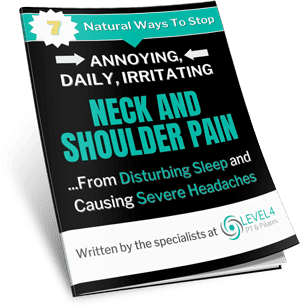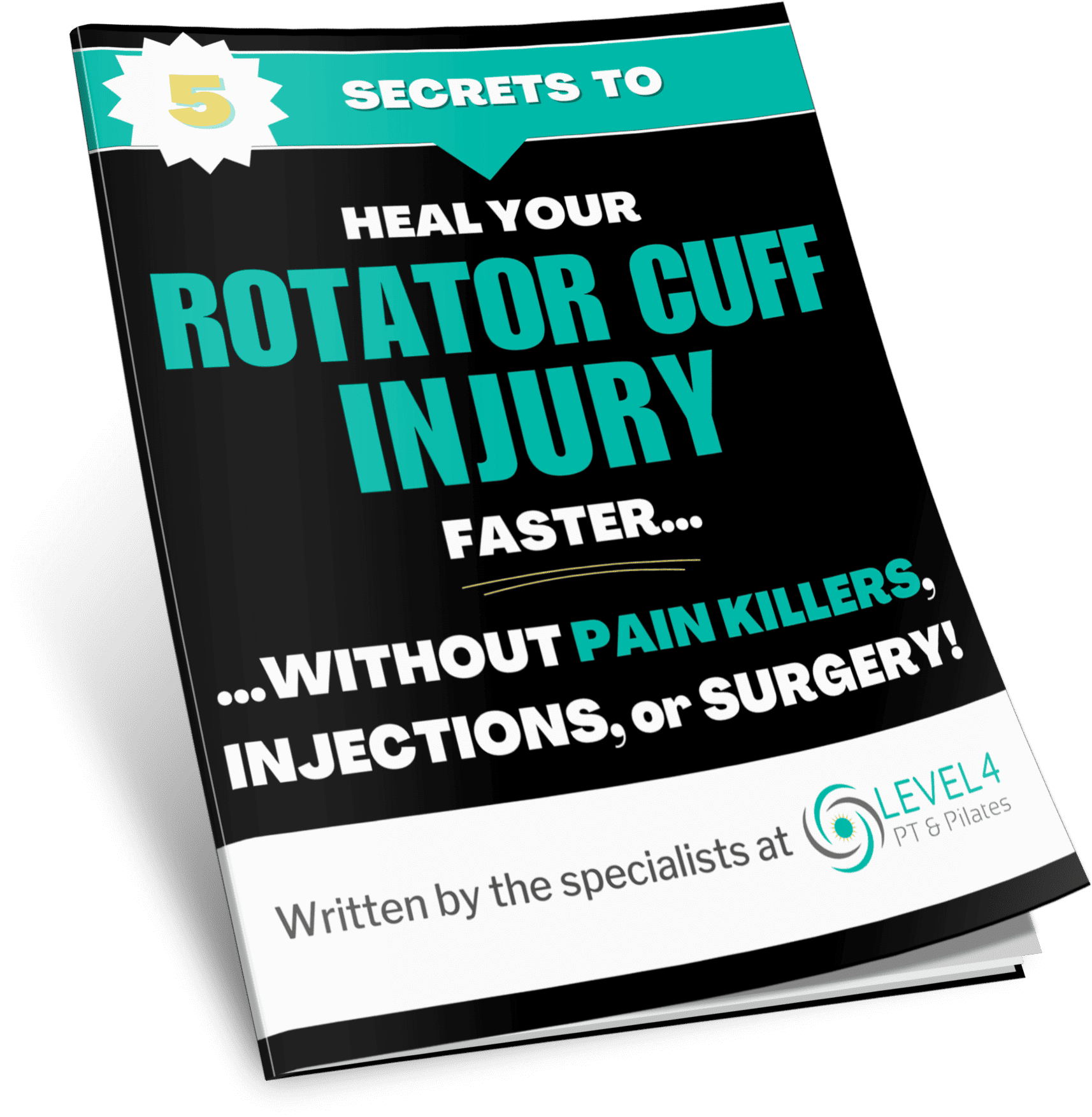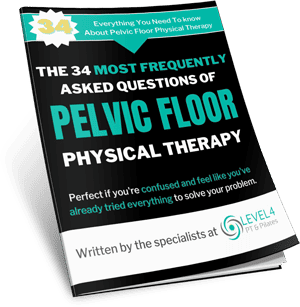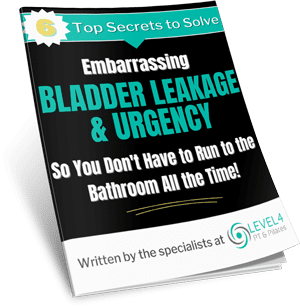
“I injured my back about a month ago lifting my granddaughter out of her car seat. I’ve been doing all the home treatment that my doctor recommended: ice, walking, anti-inflammatories, and rest from activities that bother me. I went to a local physical therapist where they taught me how to lift properly and protect my back. My leg pain and other symptoms are a little better every week, but they are definitely still there. My doctor says that based on my symptoms, she doesn’t think there is anything really serious going on but that it would be reasonable to either have an X-Ray or an MRI scan now if I am willing to have surgery. Even though I’m tired of the pain, it is getting better (slowly), and I think I will just hold off for a few more weeks. I know I definitely want to avoid surgery at all costs, so I would like to know your opinion. Do I need an X-ray or MRI for my back pain at this point in time?”
– Stacy, 54, Encinitas, CA
What a great question! This past month our wellness center has been flooded with people suffering from back pain. And with this symptom comes the popular question many of our clients ask us: “Do I need an X-ray or MRI for my back pain, since both are used for diagnosing disorders in our bodies?” Well, today we have the answer for you.
Overview of Back Pain
Lower back pain is one of the most common reasons why people visit their doctor or go to urgent care in the United States. It can range from a dull, constant ache to a sudden, sharp pain. Sometimes it can come on suddenly – from an accident, a fall, or lifting something heavy, or it can develop slowly because of age-related degenerative changes to the spine. In some cases, inflammatory disorders or other medical conditions cause back pain.
Severe low back pain may lead you to think something is seriously wrong with your lumbar spine. Perhaps you ask the doctor for an x-ray (ie, plain radiographs) or MRI (ie, magnetic resonance imaging) to relieve your concerns.
But, as hard as it may be to believe, the cause of most cases of lower back pain (even acute pain) is not serious and undergoing a spinal imaging test is probably not necessary.
“Chronic Back Pain” is not a diagnosis! Rather, the term is a symptom modified by its chronicity, both reported by the patient.
If you were inquiring instead about how to evaluate a patient with a reported history of “chronic back pain” and within that question were to inquire what is the best imaging modality to assist in determining the cause of the patient’s symptom(s), my answer would be the honest and classic one:
it depends!…
Treatment varies depending on the cause and symptoms; however, there are steps you can take to improve your health and lower your chance of developing chronic or long-lasting back pain which I discuss in the later parts of this blog.
So, whether you may want to have a say in this decision, or you may simply want to follow your doctor’s recommendation – either way, this information will help you understand what your choices are so that you can talk to your doctor about them.
Who Gets Back Pain?
Anyone can develop back pain, even children and teens. Most lower back pain is very common (8 out of 10 adults will experience back pain at some point in their lives) and while it may feel very painful, it is often not serious.
These factors can increase the risk of developing back pain:
- Age.Back pain is more common with age, starting around age 30 or 40.
- Lack of exercise. Weak, unused muscles in the back and abdomen might lead to back pain.
- Excess weight. Excess body weight puts extra stress on the back.
- Diseases. Some types of arthritis and cancer can contribute to back pain.
- Improper lifting. Using the back instead of the legs can lead to back pain.
- Psychological conditions. People prone to depression and anxiety appear to have a greater risk of back pain. Stress can cause muscle tension, which can contribute to back pain.
- Smoking. Smokers have increased rates of back pain. This may occur because smoking causes coughing, which can lead to herniated disks. Smoking can also decrease blood flow to the spine and increase the risk of osteoporosis.
If you’ve ever experienced severe back pain, then you know how it can and will limit your movements. This can include the back seeming to ‘lock’ into place. If this tends to fix itself after some time; this is normally reassuring and not serious.
Your back is like a sophisticated skyscraper. Understanding how it is put together will enable you to fix the problem yourself once you appreciate how it is put together.
Most back pain will go away usually within 6 weeks if you follow some simple measures, however, it can reoccur repeatedly; so be patient and persistent.
Back pain with the following warrants an APPOINTMENT WITH YOUR MEDICAL DOCTOR:
- Back pain waking you from sleep
- Unable to get in a comfortable position
- Numbness/weakness in/around your legs/bottom
- Problems with your bowels/bladder
- Fever
- Worsening pain over time
Types of Back Pain
Doctors and researchers describe the types of back pain in the following ways:
- Acute back pain happens suddenly and usually lasts a few days to a few weeks.
- Subacute back pain can come on suddenly or over time and lasts 4 to 12 weeks.
- Chronic back pain may come on quickly or slowly and lasts longer than 12 weeks.
Symptoms of Back Pain?
Back pain can range from local pain in a specific spot to generalized pain spreading all over the back. Sometimes the pain radiates away from the back to other areas of your body, such as the buttocks, legs, or abdomen. The intensity of back pain varies for each person. Depending on the type, cause, and location of your back pain, you may experience:
- Increasing pain with lifting and bending.
- Worsening pain when resting, sitting, or standing.
- Back pain that comes and goes.
- Stiffness in the morning when awakening and lessened back pain with activity.
- Pain that radiates away from the back into the buttocks, leg, or hip.
You should see a doctor if your pain does not improve after a few weeks or if any of the following symptoms happen with your back pain:
- Numbness and tingling.
- Severe back pain that does not improve with medication (see Treatment section).
- Back pain after a fall or injury.
- Back pain along with:
- Trouble urinating.
- Weakness, pain, or numbness in your legs.
- Fever.
- Weight loss that you did not intend.
What Causes Back Pain?
Back pain can be caused by many different things, including mechanical or structural problems with the spine, inflammatory conditions, and other medical conditions.
- Muscles: strains (overstretched muscles) or tears can cause pain
- Ligaments: sprains; overstretched ligaments
- Spine Bones: rubbing together
- Nerves: trapped/irritated
- Discs: bulging or thinning
Mechanical/Structural Problems
- Sprain: an injury to the ligaments that support the spine, often occurring from twisting or lifting improperly.
- Strain: an injury to a muscle or tendon.
- Degenerative disc disease: aging causes the discs between the vertebrae of the spine to break down.
- Herniated or ruptured discs: the discs compress and irritate nearby nerves. This often occurs at the lumbar level.
- Spondylolisthesis: a vertebra in the spine slips out of place.
- Spinal stenosis: a narrowing of the spinal column that puts pressure on the spinal cord and nerves.
- Fractured vertebrae.
- Scoliosis: or other congenital changes to the spine.
Inflammatory Conditions
- Ankylosing spondylitis: a specific type of arthritis of the spine.
- Other types of inflammatory arthritis of the spine.
Other Medical Conditions
- Osteoporosis, which can lead to painful fractures of the vertebrae.
- Fibromyalgia, a condition of widespread muscle pain and fatigue.
- Kidney stones or infections.
- Endometriosis, which is the buildup of uterine tissue in places outside the uterus.
- Infections that involve the bones of the spine or the discs between these bones, which can cause pain.
- Tumors, in rare cases, that develop on the spine or other areas of the back.
- Pregnancy.
Tests & Why They Are Needed
Diagnostic imaging, including X-Ray, MRI (Magnetic Resonance Imaging) is used to diagnose a range of spinal conditions from mild to severe and in more severe cases, a C-T Scan may be ordered . Spinal abnormalities, such as herniated discs, are frequently diagnosed using medical imaging. Other back problems that can be diagnosed using medical imaging include:
X-Ray: to look at any bones that have collapsed or degenerated. Useful if you have had trauma also. X-ray cannot see nerve, muscle or ligament damage. Spinal X-rays are also done to check the curve of your spine (scoliosis) or for spinal defects.
MRI (Magnetic Resonance Image): used to look for nerves that have been compressed or discs that might be damaged (usually you get leg: numbness/weakness & or bowel or urinary symptoms).
MRI or CT scan: only done in patients who develop ‘serious’ symptoms; Remember intensity of pain does not equal seriousness of problem in most cases of lower back pain.
What Is Usually Involved?
X-Ray:
X-ray is an image of the body many people would be familiar with. This image is made by electromagnetic radiation that passes through the damaged area and a detector on the other side picks up the beams and turns it into a shadowgraph. The image is shown in different shades of black and white depending on how much the X-ray can pass through the object. The X-ray appears white if the beams pass through dense parts of the body (like bones), while other parts (like soft tissues) that allow more beams to pass through appear dark gray.
- You will need to remove any jewelry that may be in the way of the X-ray picture. You may need to take off some of your clothes, depending on which area is examined. You will be given a cloth or paper gown to use during the test. You may be allowed to keep on your underwear if it does not get in the way of the test.
- During the X-ray test, you will lie on an X-ray table. If the X-ray is being taken because of a possibly serious injury to your neck or back, a radiologist will look at the first X-ray pictures before taking others. This is done to prevent causing more injury.
- Usually 3 to 5 X-ray pictures are taken. You need to lie very still to avoid blurring the pictures.
Here is an X-ray of the spine, you can see the vertebrae as well as the transparent parts between each vertebra which are intervertebral discs.
How long the test takes
A spinal X-ray usually takes about 15 minutes. You will wait about 5 minutes until the X-rays are processed in case more pictures need to be taken. In some clinics and hospitals, X-ray pictures can be shown right away on a computer screen.
MRI:
Magnetic Resonance Imaging (MR)I, uses magnetic fields and radio waves to create a clear detailed image with the ability to highlight problems in soft tissues, regardless of the density of tissues. Hence, it can detect various issues of the brain, ligaments, tendons, nerve, muscle, spinal cord, and skeleton. To put it simply, MRI allows the doctor to see through all the parts of the body.
- You lie on a table that slides into the MRI scanner.
- You may wear a cloth harness that can be pulled during the test to see how your spine moves.
- Your head, chest, and arms may be held with straps to help you stay very still.
- The MRI may not bother you at all. Some people even fall asleep.
- A pair of headphones may be offered to quiet the sound from the MRI machine.
- If being enclosed in the machine makes you very nervous,you may get medicine to help you relax.
This is a picture of the spine, whereby the MRI allows clearer vision of elements of the spine such as intervertebral disc.
How long the test takes
A spinal MRI usually takes anywhere from 30 minutes to 2 hours. You will also have to schedule a follow up appointment with your doctor to discuss the results.
Any Issues?
X-Ray:
X-rays can cause mutations in our DNA and, therefore, might lead to cancer later in life. For this reason, X-rays are classified as a carcinogen by both the World Health Organization (WHO) and the United States government. However, the benefits of X-ray technology far outweigh the potential negative consequences of using them.
MRI:
An MRI isn’t painful, but there are certain details about having an MRI that you should know about:
- Loud noises. The machine makes loud tapping or snapping noises. Earplugs or headphones with music are usually offered to help block the noise.
- Being confined. Some people feel nervous (claustrophobic) about being confined in that small space. If this worries you, you may be given medicine (a sedative) to help you relax. Some MRI machines, called "open MRI," are now made so that the machine doesn't enclose your entire body. Open MRI machines may be helpful if you are claustrophobic, but they aren't available everywhere. The images from an open MRI may not be as good as those from a standard MRI machine.
- Lying very still. You must lie very still for quite a while so that the machine can get clear pictures. For people with back pain, this can be hard. Talk to your doctor if you're worried about having to lie on your back.
- Time. An MRI usually takes 30 to 60 minutes but can take as long as 2 hours.
- False-positive results. A false-positive test result is one that appears to find a problem when in fact there isn't one. This can lead to more tests that really aren't needed. And it may cause needless worry that something is wrong.
What Are the Benefits?
X-Ray:
X-rays are highly beneficial and safe. You will never face any issues related to overuse or misuse of radiations. The benefits of x-rays in medical procedures are way too high to overlook.
- The technique is really simple and cheap.
- In comparison to CT scan the radiation is really low and doesn't pose any threat to you.
- With great ease tumors can be diagnosed and there will be no need for surgery.
- In case of any alien objects present inside or around your bones, it is an X-ray that will help your doctor detect it.
- Radiologists use x-rays to identify different cracks in your body. It is always used for identifying different levels of injury.
MRI:
- An MRI can find serious problems that may be causing your low back pain.
- Completely noninvasive, painless scan that uses a large magnet along with radio waves and computer technology to capture images of different organs and structures inside the body. MRI can be used for almost any part of the body, and it can cover large sections of the body in a relatively short time.
- MRI scans are very beneficial in diagnosing many different diseases and abnormalities, from cancerous tumors to hip joint defects. They are also very useful for studying the spinal cord.
What Are the Risks?
X-Ray:
- There is always a slight chance of damage to cells or tissue from radiation, including the low levels of radiation used for this test. But the chance of damage from the X-rays is extremely low. It is not a reason to avoid the test.
- If you need an X-ray during pregnancy, a lead apron will be put over your belly to protect the baby from exposure to radiation from the X-rays. The chance of harm is usually very low compared with the benefits of the test.
MRI:
An MRI can be loud, but the test itself isn’t painful.
There are no known harmful effects from the magnet used in MRI machines, but it is very strong:
- It can affect pacemakers, artificial limbs, and other medical devices that contain iron.
- Any loose metal object in the body—for example, a surgical clip or a bullet fragment—could cause damage or injury if it gets pulled toward the strong magnet.
- Metal parts in the eyes can damage the retina. If you may have metal fragments in your eye, you may need an X-ray of your eyes before you can have an MRI. If metal is found, then you won't be able to have the MRI.
- Iron pigments in tattoos or tattooed eyeliner can cause skin or eye irritation.
There is a slight risk of an allergic reaction if contrast material is used during the MRI. But most reactions are mild and can be treated with medicine. There also is a slight risk of an infection at the IV site.
Contrast material that contains gadolinium may be used in this test. The U.S. Food and Drug Administration (FDA) has safety warnings about gadolinium. But for most people, the benefit of its use in this test outweighs the risk. Be sure to tell your doctor if:
- You are pregnant or think you may be pregnant.
- You have kidney problems.
- You've had more than one test that used gadolinium.
Why Might Your Doctor Recommend an…?
X-Ray:
Sometimes, your health care provider might schedule an x-ray as a preventive measure. If you experience an injury or acute illness, your doctor might suggest an x-ray to better understand what’s happening.
MRI:
Your doctor might recommend an MRI if he or she suspects that your low back pain is caused by something more serious than muscle strain. This may be the case if:
- Your history and physical examination show signs of a serious problem, such as a fracture, tumors, infection, or nerve damage.
- You are older than 70. Your doctor may also recommend testing if you are older than 50 and also have osteoporosis or a history of compression fracture.
- You have had osteoporosis for a long time or you have diabetes.
- Your body's defense system (immune system) is not able to fight infection.
- You have a history of long-term steroid use or a history of substance use disorder.
- You have a history of a previous spine injury or back surgery.
- You have symptoms related to compression on a certain nerve root or roots.
- Back pain has not improved after at least 6 weeks of home treatment that may include pain relievers, heat or ice, and exercises.
Since MRI is advanced and radiation-free, why don’t more doctors order this test to diagnose the cause of lower back pain?
First, MRI is not appropriate in all patients because it operates using powerful magnet technology. Therefore, people who are pregnant or have metal inside their body (eg, spinal cord stimulator, heart pacemaker) cannot undergo MRI.
MRI testing is expensive, and your doctor does not want to prescribe unnecessary tests that increase your healthcare costs. According to data collected by the Kaiser Family Foundation, the cost of an MRI performed in the United States in 2014 was $1119—an amount significantly higher than other comparable countries.
What’s even worse, because of the expense, depending on your insurance carrier, your doctor may not get approval until an x-ray has been done first (because it’s much cheaper), or when a certain amount of time has passed without any symptom improvements, or after weeks of failed physical therapy (again, much cheaper).
MRI results may be variable depending on who reads the images. That is one reason why spine surgeons evaluate their patients’ MRI studies themselves.
Considering the anatomical detail an MRI provides, sometimes a spinal abnormality is revealed that may appear to be serious but is not. Take this typical example: an MRI of the lower back reveals a sizable lumbar herniated disc at L4-L5 in a patient who reports no back/leg pain or other symptoms associated with that level of the lumbar spine. This is one reason why doctors combine all their findings (eg, symptoms, physical exam) to confirm a diagnosis and then recommend an appropriate treatment plan.
Why are both X-ray and MRI recommended?

So as you can see, there is so much to consider (especially because no two back pains are the same). It isn’t that easy when attempting to choose one diagnostic tool over the other. They both are important. It just depends what structures or tissues within the body the medical provider is wanting to see. X-ray: bone and fluid; MRI: tissues, ligaments, tendons, vertebral discs, spinal cord, tumors, etc.
Because there are additional factors to consider (i.e. pregnancy, pacemaker, cancer, phobias, etc.), medical practitioners can make much better assessments as to which tests need to be performed and when after they gather all of their patients medical history and background.
So if you too have similar spine issues like Stacy, feel the back pain radiating to the legs, or unable to find the cause of the pain after weeks and weeks, you need both X-ray and MRI to allow the doctor and your physical therapy provider to make an accurate diagnosis. X-ray produces a clear image of spinal structure, while MRI allows the doctor to see disorders of the discs.
It is important to have a specialist doctor or radiologist to read and interpret the scan to avoid inaccurate diagnosis. Many of our clients report to us that it sounded like suajili when the doctor read them their results. Because we have more time with our clients, we are more than happy and able to read your results in more layman’s terms so you can better understand what is going wrong and how to best solve your back problem.
This is very important because we want to find out the root cause of your back pain so we can fix it. Too many people spend a fortune chasing other modalities that only help treat their symptoms for a short period of relief (i.e. massage, ice/heat, medications, acupuncture, etc.), and cause them to suffer much longer than they have to. At times making matters worse!
Wouldn’t you want to know the “true cause” for your back pain so you can address it appropriately and get on with living a more active, healthy, and happy life? I would.
Key Low Back Pain Image Testing Takeaways
So, if you develop lower back pain, listen to your doctor’s recommendation—even if he/she doesn’t order a lumbar x-ray or MRI study right away.
Keep in mind the imaging test indications mentioned earlier in this blog—such as neurological symptoms and/or co-existing medical conditions that may accompany lower back pain. And, take comfort in knowing that undergoing an x-ray or MRI will not make your back pain go away faster.
When do you need to get an x-ray?
If you’ve experienced an injury or aren’t feeling well in general, you might be wondering, “Do I need an x-ray?” Usually, your health care provider will recommend an x-ray if they can’t diagnose the issue by examining you via sight and touch. An x-ray can provide a clearer idea of what’s going on inside your body, allowing your medical provider to give you the best treatment available.
When do you need to get an MRI?
An MRI is often ordered when more detail is needed or the cause of symptoms is unclear on other types of imaging, such as X-ray, ultrasound, and computed tomography (CT). It can help diagnose diseases of the brain, spine, skeleton, abdomen, and soft tissues.
For example, MRI is excellent at diagnosing and monitoring spinal cord abnormalities, including demyelination, tumors, or disc herniations and degenerative changes.
The Fastest Way To Stop Lower Back Pain
Unfortunately, in a blog, I’m unable to tell you exactly which diagnostic testing is suitable for your specific back pain problem at this point in time but what I can tell you is the best way on how to stop lower back pain – because there are lots of things that impact your lower back.
You may have existing conditions which also need to be treated so that you can enjoy a day without stiffness or discomfort. Also, there may be an underlying problem that hasn’t been diagnosed previously and this could be the reason your lower back pain keeps coming back (and getting worse).
At LEVEL4 PT & Pilates, we offer free physical therapy consultations, where you can speak to a member of our team, ask any questions that you have, and find out what’s stopping you from living a pain-free life and doing all the things you love as often as you’d like.
We can also help you understand the best ways on how to strengthen your posture and core muscles which will keep your spine healthy and you living a more active, healthy, and happy life.
Arrange your free physiotherapy consultations with our simple webform, or if you prefer to talk over the telephone, you can call us at (760) 503-4440.
More Natural Ways To Solve Back Pain
For more back pain tips, download a copy of our FREE back pain guide and discover ““How to Put an End to Back Pain and Stiffness – Without Taking Painkillers, Without Risking Surgery and Without Having to Wait to See the Doctor!”
Click Here To Download Your FREE Back Pain Guide
Or to read more of our back pain related blogs.
Click Here To Read More Back Pain Blogs
Or if you are in pain right now, and want more than free health tips, arrange a FREE Discovery Visit where you can speak to a member of our back pain specialist team in Encinitas, CA.
Click Here to Arrange Your Free Discovery Visit
We recommend a free Discovery Visit because:
“People who book a Discovery Visit usually talk about how nice it is to actually be listened to, and be able to get simple, jargon-free, personalized advice – Which is something we rarely get when we have been to the doctor with our problems.”
Our team would love to see you in the clinic to help you recover from Back Pain..
For more expert advice, read our other blogs or check out our YouTube channel:
Read Our Blog – Back Pain: The ONE Thing That Makes Sciatica Worse and What To
Read Our Blog – Pilates: Is it Good for People with Lower Back Pain or Sciatica?
Read Our Blog – 3 Things That Cause Back Pain That You Didn’t Know Until Now!
Visit Our LEVEL4 PT & Pilates Women’s Health YouTube Channel
And if you want the most effective solution, read on…
Why Pilates is the Hidden Secret for Back Pain Relief:
For years now, people ranging from health experts to celebrities (like Sylvester Stallone) have touted the benefits of Pilates, singing the praise of how the regimen sculpts their body without the bulk of weightlifting.
But there are many advantages beyond just that toned body.
Pilates is three-dimensional, working the entire body. It is an overall body fitness system that addresses imbalances, core control, strength, flexibility, movement efficiency and balance. And it is low-impact and it works multiple muscle groups at the same time.
Pilates exercise is commonly thought to “strengthen your core muscles.” Why is that important? Your spine stability and trunk control are an integral part of spinal function. It takes a lot of stress off the joints in your spine. In the lower back, the deep spinal muscles span the space between the twelfth rib and the pelvis. They help to stabilize and mobilize the lower back. These muscles also protect the abdominal organs, control forward bending, and assist in backward and side bending of your spine.
They also help support and maintain the normal spinal curve in the lower back, giving the spinal column its resiliency and capacity to absorb shock as it connects the pelvis and chest in alignment on the vertical axis. If the deep spinal muscles of the lower back are too tight, the lower back is too rigid to allow a normal range of movement.
Being weak compromises both the structural support and upright posture of the body. Therefore it is important to release tension in the back as well as to build strength.
Why Pilates is the Hidden Secret for Back Pain Relief
And there you have it! So to summarize everything, having a healthy diet is more important than just getting the correct nutrients for your body. It also helps ease any pressure on your joints and muscles.
Including flexibility exercises such as yoga into your daily routine along with a core stabilization Pilates program can do wonders for your general flexibility, strength, and more importantly, eliminating your back pain.
Just because it’s slow and calming, doesn’t mean it’s not a good workout for your body!
Not many people seem to notice these problems in their lifestyle and often ignore them because they don’t see what they eat. Also what they avoid doing in their daily routine can have a big impact on their back pain.
So please, don’t make the mistake that so many other people make and implement these into your daily routine today!
If you want to know any more tips on how to best ease back pain and stiffness or learn more , click here to download our free guide today: https://www.level4pt.com/back-pain/
And if you want to learn how to choose the best Pilates studio for you, click here to download our free Pilates guide today: www.level4pt.com/pilates/
- 3 Proven Ways You Can Relieve Sciatic Pain While Sleeping - September 14, 2023
- Menopause and the Impact It Can Have On Your Weight - August 4, 2023
- 5 Ways That Pilates Can Help With Back Pain - July 19, 2023



















